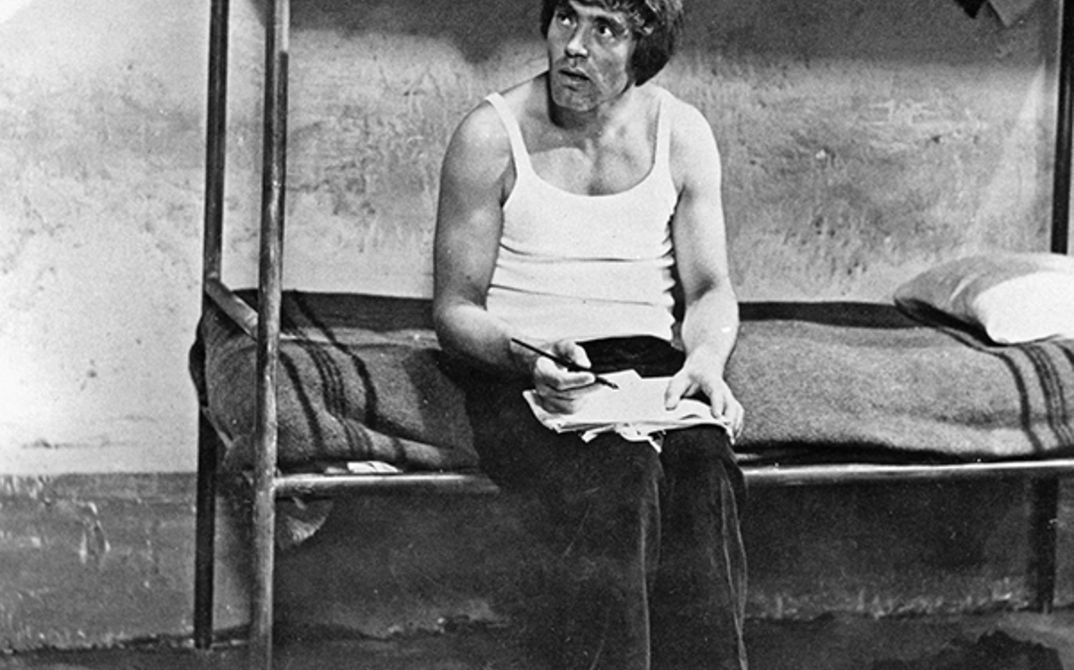A sanctuary of the naïf
In the relationship between art and society, the “naïf” is the antipode of the artist. The artist does not believe in the societal conventions; he knows above all that if one wants to create art one ‘should’ not believe in them, but he is able to depict them like any other object. The “naïf”, by contrast, believes in the societal conventions and even believes that one ‘must’ believe in them; so, he depicts them in a conformist and respectful way, as privileged material that requires special treatment. As a result, the abilities of an artist lie in his mode of expression, while the abilities of the “naïf” lie in what is unconscious that, against his will, peeks through his meticulous depiction.
These ideas occurred to us some time ago when Sergio Citti’s film OSTIA came to a Roman cinema: we are late in beginning to speak of it, but in our opinion it would be disadvantageous to maintain silence about it, whether because many people have seen the film and may want to know what we think of it or, especially, because this film is one of the rare cases of “naïve” cinema that we know of – perhaps the only one.
The story of OSTIA is simple. A band of young guys stumbles across a woman lying on her back on the grass in a meadow on the outskirts of a city; at first glance, she seems to be dead. But she is not dead; she is a prostitute offering herself in an unusual and in a kind of symbolic way: as if she were the earth on which she sprawls. The group carries the woman into a ramshackle house in which two brothers live; their nicknames are Rabbino (rabbi) and Bandiera (flag). These two spurn the sex; while the others in the group take turns with the woman, they resolutely drink glass after glass, emptying a whole pitcher of wine. Why don’t the brothers do like the others? If we consider it truly, it’s because, without explaining it to themselves, they have both fallen in love with the woman and are already rivals. Without realising it, each of the two wants the woman all for himself. And so begins the strange life of the girl, Rabbino, and Bandiera as a trio.
The two brothers and the girl tell each other their life stories. The stories are very similar, especially in one point: both stories centre on the father’s behaviour. The girl’s father was her first lover; as children, Rabbino and Bandiera killed their drunken and brutal father by throwing him out of a window. Theoretically, we are dealing here with incest and patricide. But in reality, in the very moment when he “naïvely” depicts the father as a saint, Citti involuntarily shows us the true nature of relationships that are not familial, but animalistic. In reality, the two boys killed a male rival, and the girl suffered a man’s sexual violence.
After a while, the brothers land in jail for theft. And then their rivalry suddenly explodes in a frenzy. But here, too, where Citti seemingly respects the family conventions that make Rabbino and Bandiera brothers, in reality he describes an animalistic relationship once again. And so, during a drive to Ostia, when Rabbino surprises Bandiera with the girl, our impression is less that of a fratricide than of a gory collision between two male beings afire for the same woman.
OSTIA is a remarkable film and, as we said, unique in its kind. Sergio Citti depicts an authentic Rome in which the hypocritical and sardonic atmosphere of Belli’s (1) old city is tied to the misery of Pasolini’s city district. But Citti does not show this reality in Pasolini’s contemplative way; rather, he reproduces it with the immediacy of someone who is himself part of this reality.
(1) Giuseppe Gioacchino Belli (1791–1863), Roman folk poet
(Alberto Moravia, L'Espresso, Rome, 11 Oct. 1970, Infoblatt No. 7, 1. Internationales Forum des jungen Films, Download PDF)
